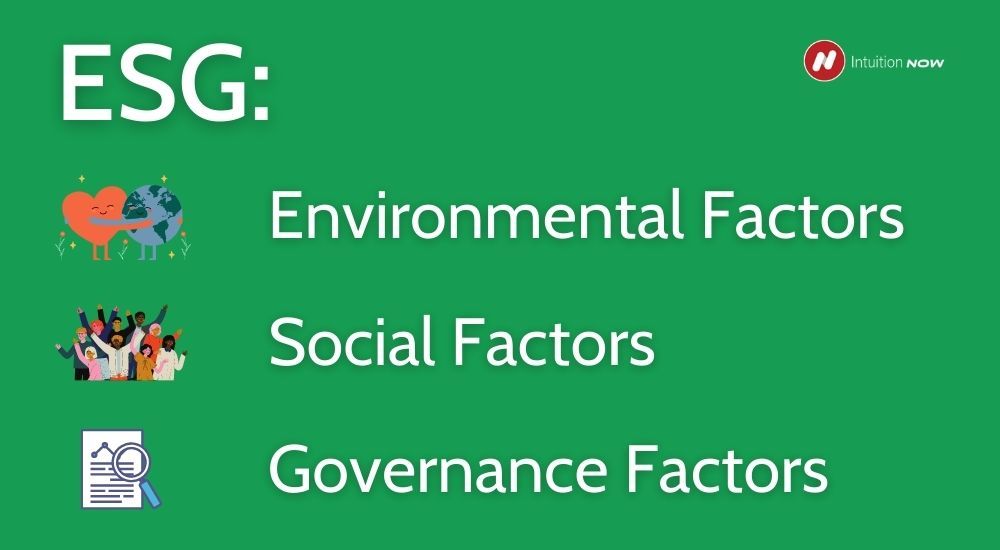Traditionally, investors have only been concerned with the financial returns of their investments.
However, in recent decades, many investors have begun to move beyond purely financial considerations.
This shift is referred to as ESG (environmental, social, and governance) investing or socially responsible investing (SRI).
Online, on-demand, accredited course: ESG InvestingESG investing refers to an investment strategy that, in addition to conventional financial metrics, also considers ESG factors.
Investors may approach ESG investing in various ways. For retail investors, it may mean working with advisors to identify investment funds that are aligned with their values.
For institutional investors, the process may be more complex, involving significant investment in new capacity and extensive changes to decision-making processes.

It is important to understand the factors comprising ESG to appreciate the aims of investors in this growing area of finance.
ESG investing is most often associated with the environment and climate change alone, but the term denotes a much broader range of factors tied to sustainable development.
In ESG investing, environmental factors are those relating to the natural environment and firms’ impact on it.
- Climate change
- Carbon emissions
- Resource depletion
Social factors are those relating to people, including employees, customers, consumers, suppliers, and members of the broader community.
- Workplace health and safety
- Workforce diversity
- Product quality
- Community relations
Governance factors relate to how a company is managed and run.
Corporate governance for example is the collection of rules, relationships, systems, and processes by which companies are managed, including the mechanisms used to hold companies and their management to account.
- Transparent accounting methods
- Avoiding conflicts of interest with board members
- Refraining from engaging in illegal activities
Each of the three factors must be included when considering an ESG investing strategy.

Global ESG assets are on track to exceed $53 trillion by 2025, more than a third of the projected total assets under management (
Bloomberg). But what is driving this growth?
An increasing number of emerging risks pose a threat to investors, including climate change, aging populations, and cybersecurity threats. These new global risks have driven a growing interest in sustainable development.
A core aspect of sustainable development is ensuring that investment flows support a sustainable agenda.
This is putting pressure on investors to adopt ESG investment strategies that are aligned with sustainable development goals (SDGs).
To support the transition to sustainable investing, many governments have issued new regulations requiring institutional investors to address sustainability and ESG concerns.
Clients and consumers are also demanding that the investment industry confront the reality of new risks and new sustainability imperatives.
Increasingly, both retail and institutional clients are asking their investment managers to offer ESG options.
This is encouraging global asset managers to invest in new ESG product lines and improved SRI capacity.
Together, these factors are driving the growth of responsible investing.

One historical limitation on investment analysis that incorporates ESG factors has been a lack of data.
While firms report financial metrics every quarter, information about their environmental impact, labour relations, governance structures, and social impact has traditionally been limited and hard to find.
Today, however, many providers offer detailed and comprehensive ESG information for thousands of companies.
At the same time, more firms are producing regular, detailed – and in some cases, audited – reports on their ESG performance.
One key development has been the emergence of initiatives – such as the Task Force on Climate-related Financial Disclosures (TCFD) and the Sustainability Accounting Standards Board (SASB) – which have helped create standardized formats for gathering and reporting ESG data.
This – together with the efforts of companies such as MSCI, Bloomberg, S&P, and others – has helped to create large and growing bodies of comparable and relatively high-quality data.
The wider availability of such data has made it easier for investors to incorporate ESG analysis into their investment decision-making.
This data has also facilitated the development of ESG and SRI indices and helped investors to identify investable securities that meet their ESG criteria.
Therefore, in contrast to an earlier period, when data was scarce, today, SRI-relevant data is more accessible and driving enhanced SRI and ESG investing uptake.
ESG investing encompasses a fair balance of environmental, social, and governance considerations. Emerging global risks such as climate change are the biggest growth drivers of ESG investing today, pushing asset managers to look behind pure financial gains.
As ESG reporting measures become more robust, so does the availability of high-quality data to support this growth in ESG investing, which is set to increase substantially in the coming years.





